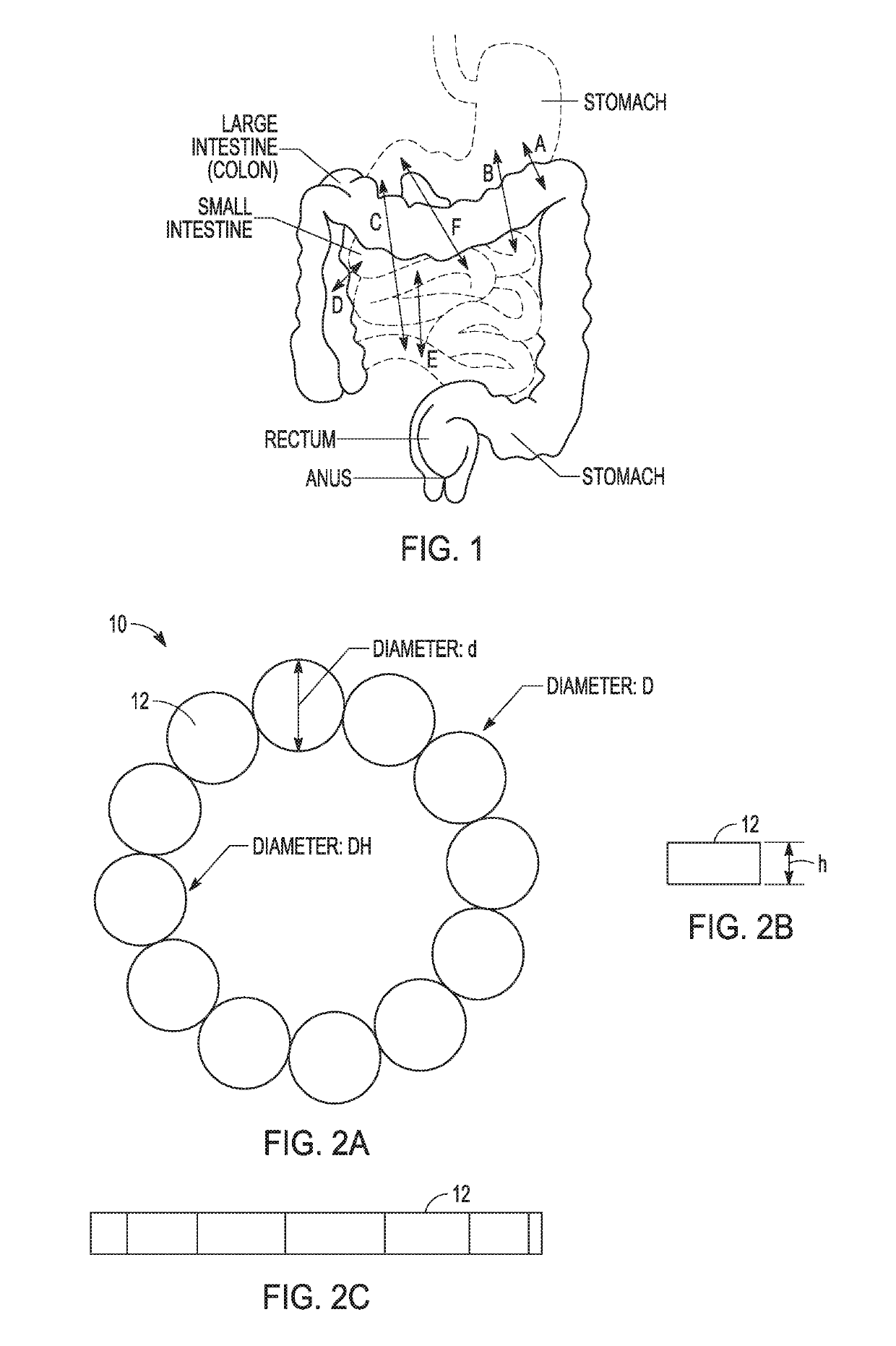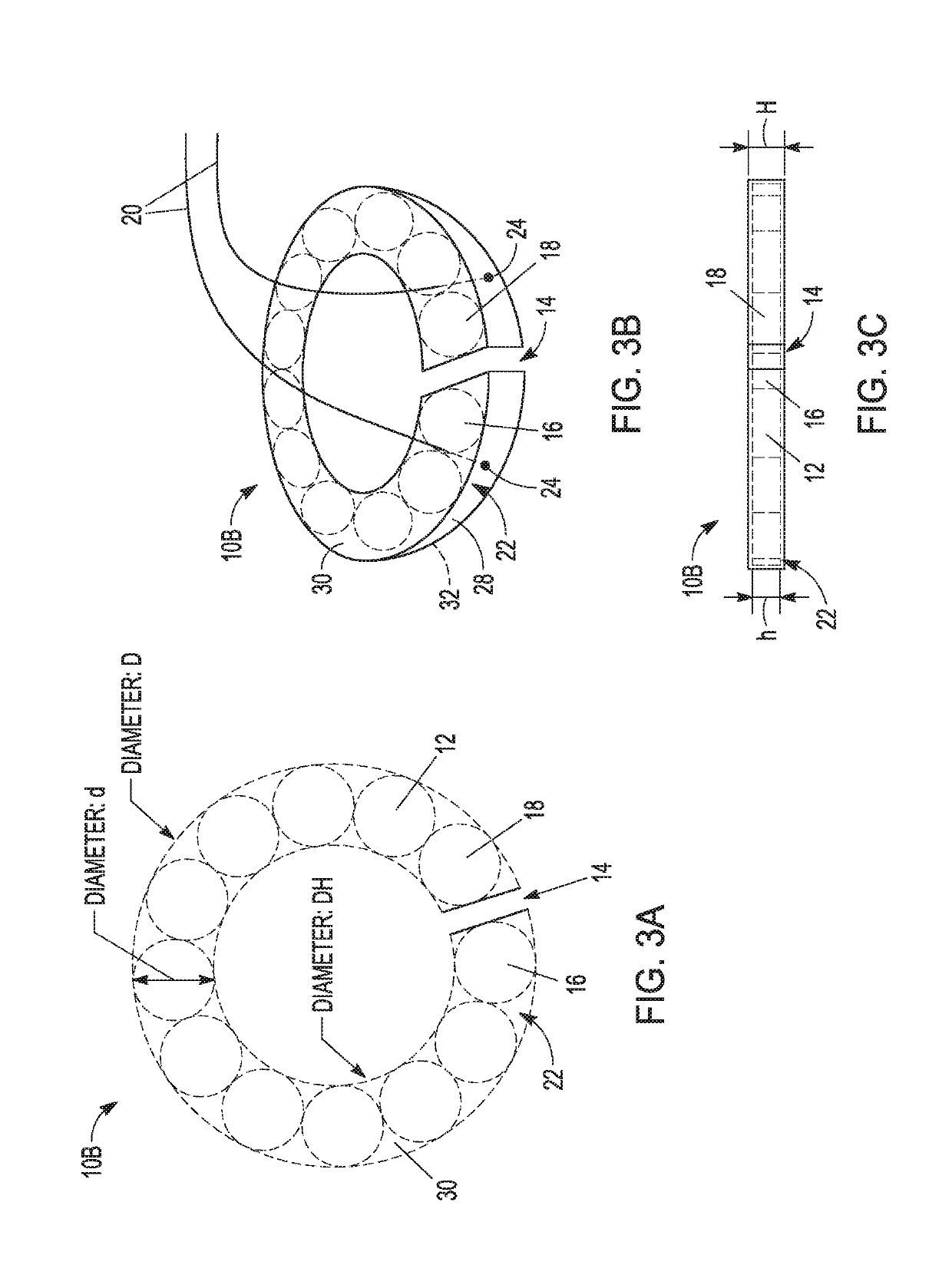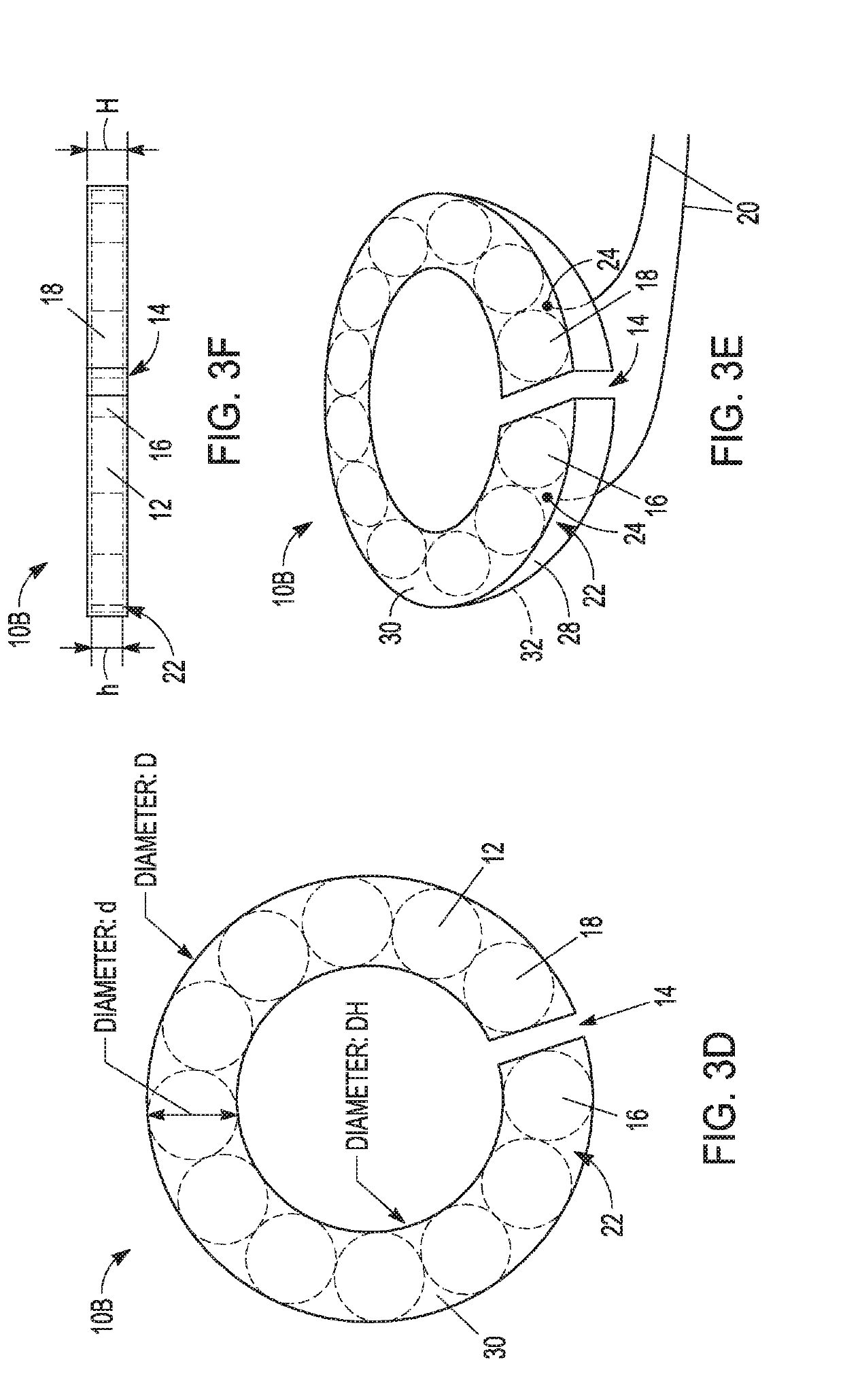Magnetic anastomosis devices
a magnetic device and anastomosis technology, applied in the field of magnetic devices, can solve the problems of insufficient insulin production, inability of cells to respond properly, and long-term complications affecting almost every part of the body, and achieve the effect of improving safety and efficacy of magnetic devices
- Summary
- Abstract
- Description
- Claims
- Application Information
AI Technical Summary
Benefits of technology
Problems solved by technology
Method used
Image
Examples
embodiment 1
[0133 provides a magnetic anastomosis device (MAD) comprising:[0134]at least twelve magnets;[0135]a tube comprising the at least twelve magnets;[0136]wherein the tube is flexible and conformable so that the MAD transforms its shape from a ring shape to a linear shape to ring shape.
[0137]Embodiment 2 provides the MAD of Embodiment 1, wherein the tube is a polymer heat shrink tube (PHST).
[0138]Embodiment 3 provides the MAD of any one of Embodiments 1-2, wherein the tube is heated with the at least four magnets suitably positioned therein to form the MAD.
[0139]Embodiment 4 provides the MAD of any one of Embodiments 1-3, wherein the tube is durable to protect the magnet, a coating thereof, or a combination thereof, from damage.
embodiment 5
[0140 provides the MAD of any one of Embodiments 1-4, wherein the tube acts as a protector for brittle and fragile neodymium magnets.
embodiment 6
[0141 provides the MAD of any one of Embodiments 1-5, wherein guiding elements attach to the periphery of the at least one magnet and inside of the tube.
[0142]Embodiment 7 provides the MADs of Embodiment 6, wherein the guiding elements attach to the at least one magnet directly.
[0143]Embodiment 8 provides the MADs of any one of Embodiments 6-7, wherein the at least one magnet directly connected to the guiding elements comprises two open end magnets in the MAD, the two open end magnets each comprising an eyelet loop.
[0144]Embodiment 9 provides the MADs of any one of Embodiments 6-8, wherein the at least one magnet directly connected to guiding elements comprise two open end magnets in the MAD with an arc-shaped loop on the magnets.
[0145]Embodiment 10 provides the MAD of any one of Embodiments 6-9, wherein the guiding elements comprise single or multiple polymer filaments, sutures, braided lines, metal wires, or combinations thereof.
[0146]Embodiment 11 provides the MAD of any one of E...
PUM
 Login to View More
Login to View More Abstract
Description
Claims
Application Information
 Login to View More
Login to View More - R&D
- Intellectual Property
- Life Sciences
- Materials
- Tech Scout
- Unparalleled Data Quality
- Higher Quality Content
- 60% Fewer Hallucinations
Browse by: Latest US Patents, China's latest patents, Technical Efficacy Thesaurus, Application Domain, Technology Topic, Popular Technical Reports.
© 2025 PatSnap. All rights reserved.Legal|Privacy policy|Modern Slavery Act Transparency Statement|Sitemap|About US| Contact US: help@patsnap.com



